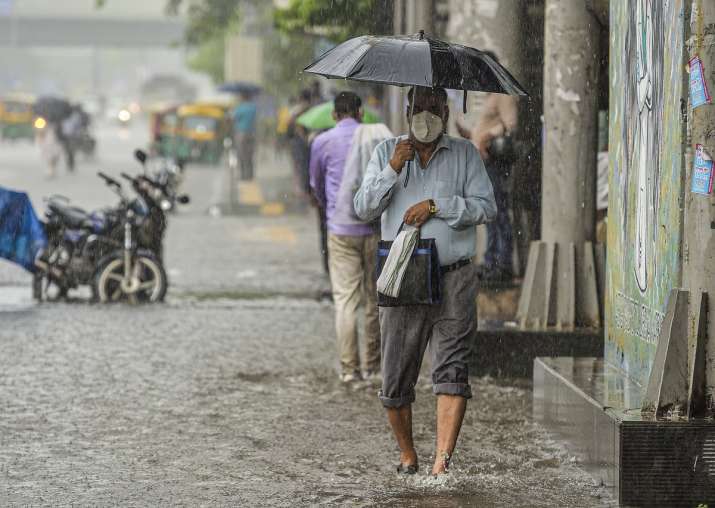
New Delhi: A man carries an umbrella while walking on a waterlogged road during heavy rains.
The India Meteorological Department (IMD) said on Monday that rainfall during August and September, the second half of the four-month rainy season, is likely to be above normal. In another forecast for August, IMD Director General Mrityunjay Mohapatra said that the monsoon is also likely to be normal for the month.
“The average rainfall for August to September 2021 is likely to be normal across the country (95 to 105 per cent of the long period average) with a trend of being on the positive side of normal,” Mohapatra said in an online. Briefing. The LPA for the August-September period of rainfall over the country as a whole for the year 1961-2010 is 428.3 mm.
Every year, the IMD issues forecasts for the second half of the southwest monsoon for August and September, the last two months of the four-month rainy season.
The spatial distribution suggests that there is a possibility of below normal rainfall over many parts of North, East and Northeast parts of the country. The IMD said that most parts of peninsular India and adjoining central India are likely to receive above-normal rains.
The IMD has also started issuing month-wise forecast for the four-month rainy season from this year.
For August, it said, “The average rainfall over the entire country is likely to be normal (94 to 106 per cent of the LPA),” Mohapatra said.
The LPA of August rainfall over the country as a whole for the period 1961-2010 is 258.1 mm. Is
The spatial distribution suggests that below normal rainfall is likely to occur over many areas of Central India and some areas of North India.
“There is a possibility of above-normal rainfall over most parts of peninsular India and Northeast India,” he said.
Mohapatra said the present sea surface temperature (SST) and atmospheric conditions over the equatorial Pacific Ocean indicate neutral ENSO (El Nio) conditions.
SST is one of the major factors affecting the Indian monsoon. SSTs over the central and eastern equatorial Pacific Ocean are showing a cooling trend.
The latest forecasts suggest that ENSO neutral conditions are likely to continue during the remainder of the monsoon season and the likelihood of a re-emergence of La Nia conditions increases at or after the end of the monsoon season.
La Nia is associated with the cooling of the waters of the Pacific Ocean, while El Nio is associated with its warming.
Apart from the ENSO position in the Pacific, other factors such as the Indian Ocean SST also influence the Indian monsoon. Presently, negative Indian Ocean Dipole (IOD) conditions prevail over the equatorial Indian Ocean.
Forecasts suggest that the negative IOD conditions are likely to continue during the remaining part of the monsoon season.
A negative IOD is associated with the warming of the waters of the Indian Ocean, while a positive IOD is associated with its cooling. Positive IOD conditions are favorable for a good rainy season.
Read also: heatwave, unusually late monsoon and record rainfall; Delhi witnessed strange weather conditions in July
Read also: Seven percent less rain than normal in July: IMD
.